Our planets – Traveling through our galaxy
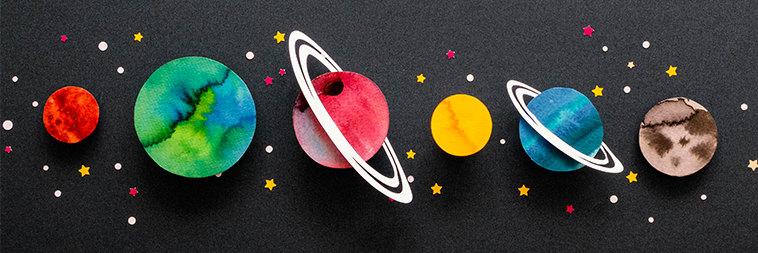 Image by Freepik
Image by Freepik
Discover our solar system and all the planets residing in it! Our solar system is made up of eight different planets. All planets bring something special to light and show us new reasons to be amazed. From the fiery surface of Venus to the icey surroundings of Neptune, let’s explore our galaxy!
We will be discussing our planets in order of their proximity to our Sun. Therefore, let’s start with the planet which is closest to our Sun: Mercury!
Planet Mercury
Aesthetically the planet Mercury looks a lot like a Moon. It is the smallest planet of our solar system. Of all the planets in our solar system, Mercury has an orbit with the greatest deviations. This means that the ‘circle’ in which the planet travels around the Sun, is not really a circle. This results in a difference in closeness of the planet to the Sun, differing from 46 to 70 kilometers.
Nonetheless, Mercury is the planet which is closest to our Sun. Because of this, the Sun appears about 2.5 times bigger in Mercury’s sky than it does on Earth.
Despite the fact that Mercury looks like our Moon, the planet can hardly be compared to the Earth, for instance: a year on Mercury takes 88 Earth days.
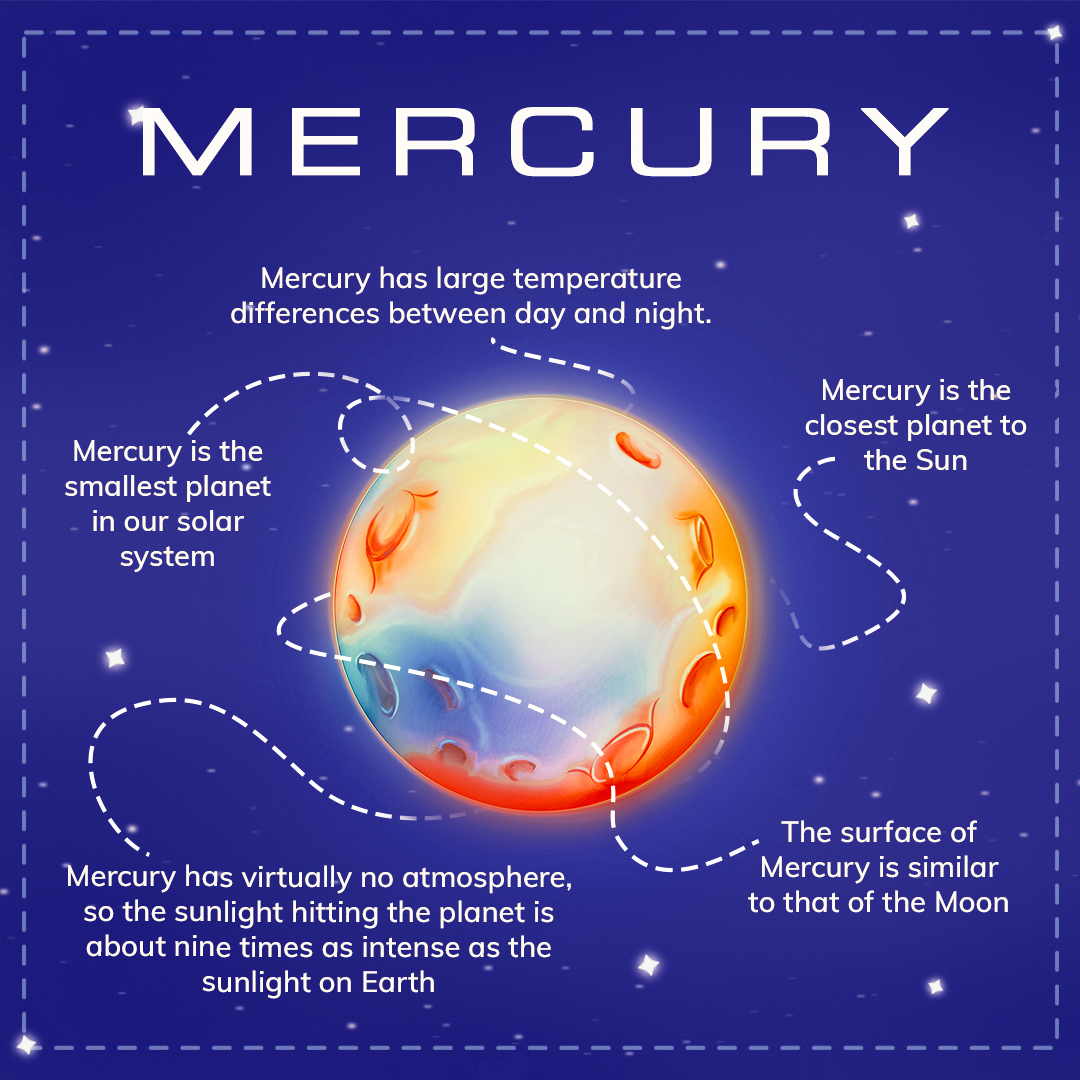
The planet Mercury is visible to the naked eye from Earth. You can best view the planet in the early morning or evening twilight when the Sun is also shining. However, because Mercury is so close to the Sun, the planet may be difficult to observe because of direct sunlight.
Planet Venus
The second planet counted from the Sun is Venus. This planet is also known as the planet of love, since it is named after the Roman goddess of love and beauty. The size, mass, and average density of planet Venus are about the same as that of the Earth.
Venus has – compared to most other planets – no Moons.
Venus is the hottest planet in our solar system. It is almost 500 degrees Celsius on Venus during the day and nighttime! With an exceptionally high temperature and an air pressure of 90 bar, life on Venus appears impossible.

Venus is the brightest planet visible from Earth. Venus may appear to be a white planet when being viewed from Earth, this is because of the dense atmosphere which we can see from Earth. However, under the thick, white clouds, Venus is actually red. This red color is caused by the roads of lava that flow on Venus.
You can often view Venus from the Earth. Being so close to the Sun, Venus is only visible up to four hours after sunset or four hours before sunrise. Therefore Venus is also called “the Morning Star” or “the Evening Star”.
Planet Earth
Third place is our planet Earth. Our Earth is also known as the ‘blue planet’, a nickname the planet has to thank all the water on its surface for. This water does not only make the planet appear blue, but also makes it very unique since no other planet contains such large quantities of liquid water!
The Earth consists of a mantle which has a liquid outer core and a solid inner code. The outer core is responsible for generating the Earth’s magnetic field. We should be grateful for this magnetic field since it protects us, and all life on Earth, against solar wind and cosmic rays.
Earth is the only planet known to contain life.
The Earth has a very useful natural satellite: the Moon. This Moon greatly influences life on Earth. It causes the tides in the oceans, stabilizes the tilt of the Earth’s axis and causes the Earth’s rotational speed to drop around its own axis. In addition, the Moon also catches meteorites that could otherwise hit the Earth.
The Earth is the only planet with plate tectonics. Other rocky planets in our solar system (such as Mercury, Venus and Mars) have never had movement in their outer shells.
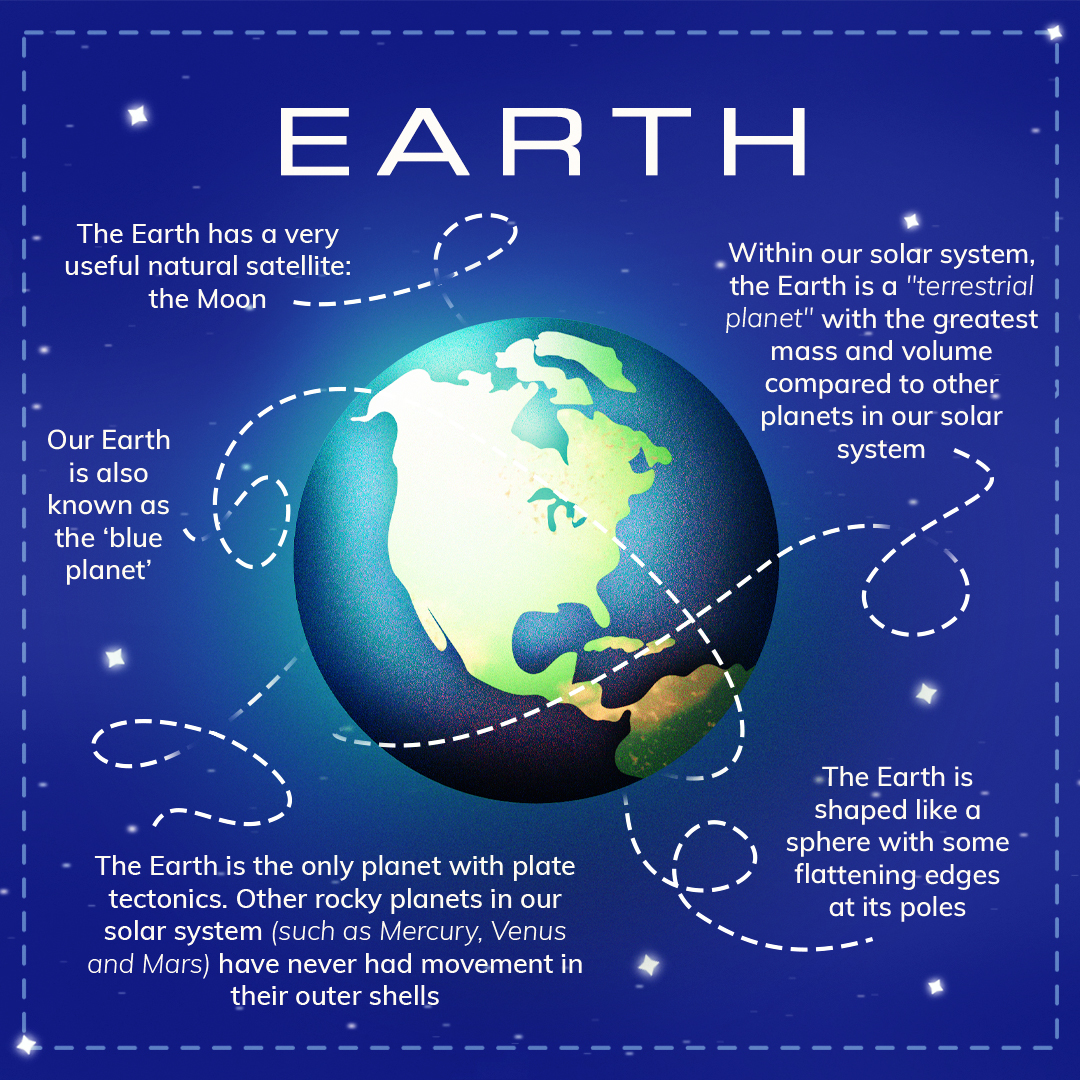
There is plenty to see from Earth! Depending on the cycle of the Moon our “natural satellite” can almost always be spotted in the night sky. In addition, countless stars illuminate our sky! During the day we are warmed by the Sun, which is also visible on a clear day.
Planet Mars
Mars is the fourth planet counted from the Sun. Surprisingly, the planet looks a bit like our Earth. Mars has deserts and ice caps and also craters, just like our Moon. The days and seasons on the planet Mars can be compared to those on Earth. This is because Mars has an axial tilt that is quite close to Earth’s. This means that Mars, like Earth, also has the same seasons as spring, summer, autumn and winter.
However, the planet is much smaller than our Earth. Mars is the second smallest planet in our solar system! The only planet smaller than Mars is Mercury. Additionally, in comparison to our Earth, Mars has two moons. These moons are called Phobos and Deimos.
Mars has a specific kind of dust on the surface which gives the planet a red appearance.
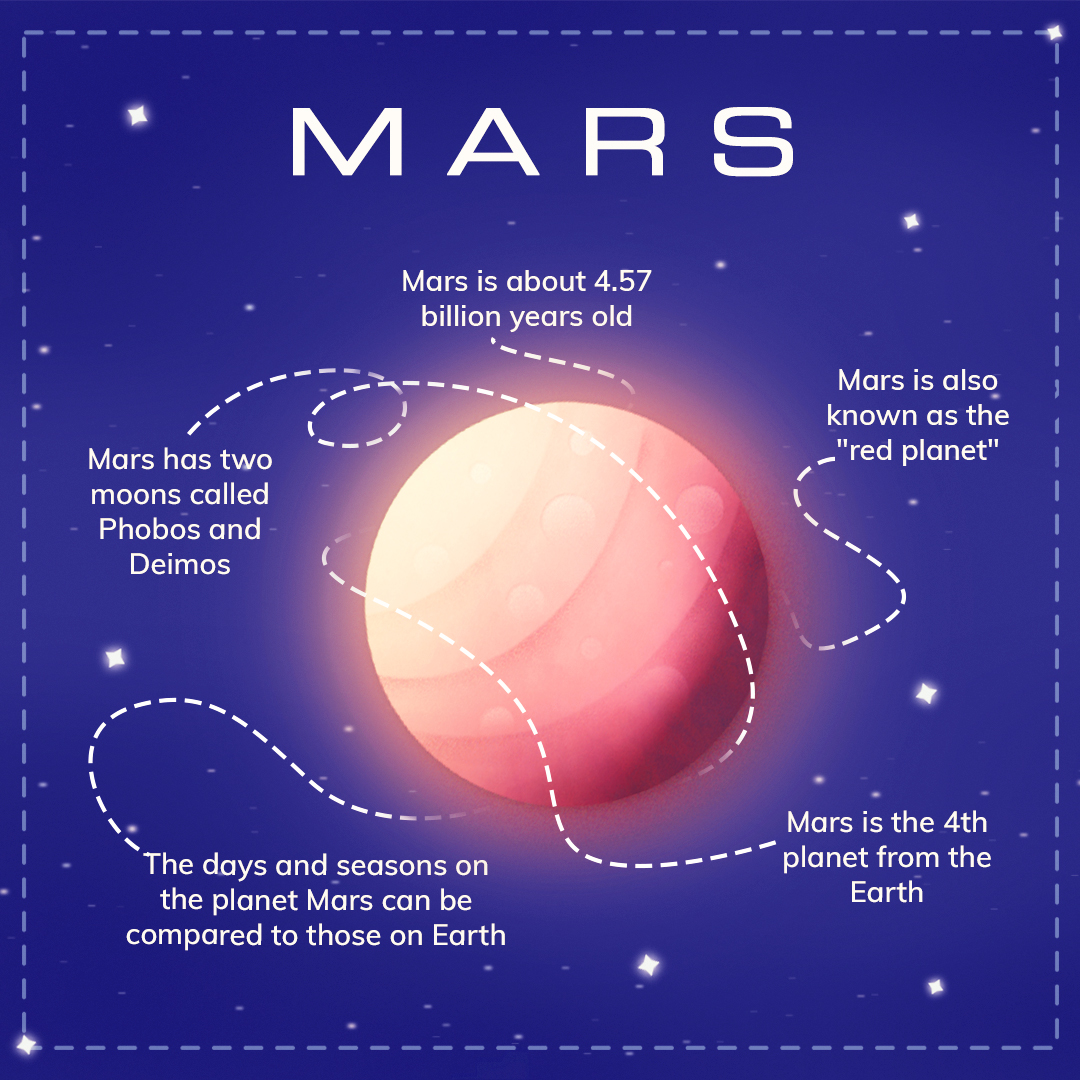
The planet Mars is very noticeable in the night sky because of its red glow. The only planet more visible than Mars is Venus, and of course our Moon and the Sun. The planet Mars can be seen with the naked eye, but we recommend that you use binoculars or a telescope so you can see all the details!
Planet Jupiter
Planet Jupiter is the fifth planet from the Sun and the largest planet in our solar system. The planet is named after the Roman god Jupiter, who was the king of the gods. The planet is named after this god because of its massive size. Extraordinarily, Jupiter’s mass is 2.5 times that of all the other planets in the solar system combined!
Flashes of lightning on Jupiter suggest that there is an extra layer of water clouds on the planet. In comparison to the Earth, the electrical discharges on Jupiter can be up to a thousand times more powerful than lightning on Earth.
The best known circumstance on Jupiter is called the Great Red Spot which is a storm located near the South Equator.
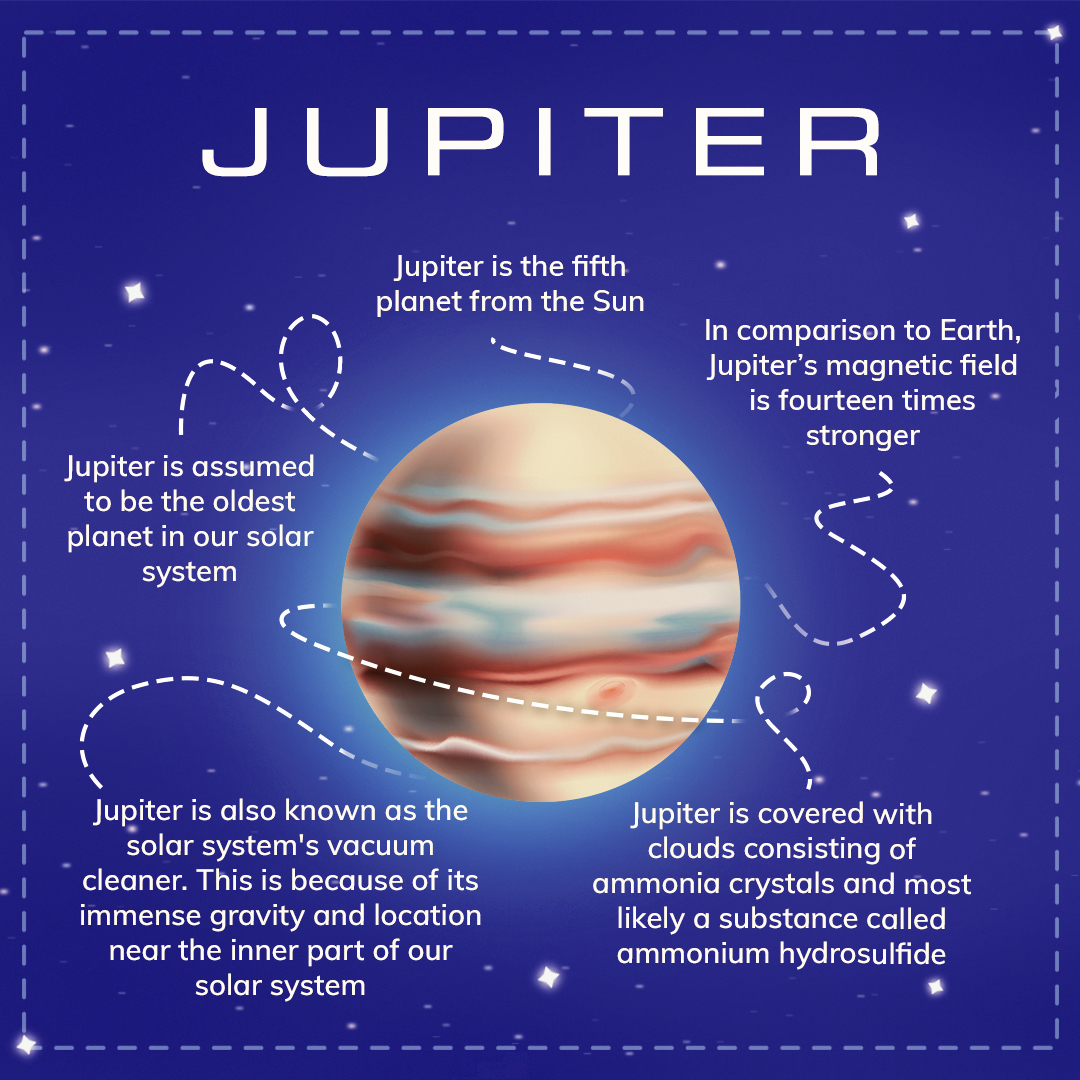
Jupiter has been observed since prehistoric times. Depending on Jupiter’s position with respect to the Earth, it can vary in brightness. The four largest moons are Io, Europa, Ganymede, and Callisto, collectively known as the “Galilean moons”, and are visible from Earth with binoculars on a clear night. Additionally, a small telescope will usually show Jupiter’s four Galilean moons and the prominent cloud belts across Jupiter’s atmosphere. A large telescope will show Jupiter’s Great Red Spot when it faces Earth.
Planet Saturn
We have arrived at the sixth planet counted from the Sun, which is Saturn! Saturn is a big gas-giant planet with a ring around it. Only planet Jupiter is bigger than Saturn. Saturn is perhaps best known for the ring that surrounds it. This ring mainly consists of ice particles, debris and dust. There have even been discoveries of ice on the ring of Saturn!
One day on Saturn lasts 11 hours.
Saturn heats the space around itself. It radiates 2.5 times more energy into space than it receives from the Sun.
The planet has a light yellow hue due to the ammonia crystals in the upper atmosphere. As you get closer to the core of the planet, the pressure and temperature of the atmosphere increases. Saturn is surrounded by 82 moons. While there is little possibility of life on Saturn, Saturn’s moons (like Titan) could possibly contain life!
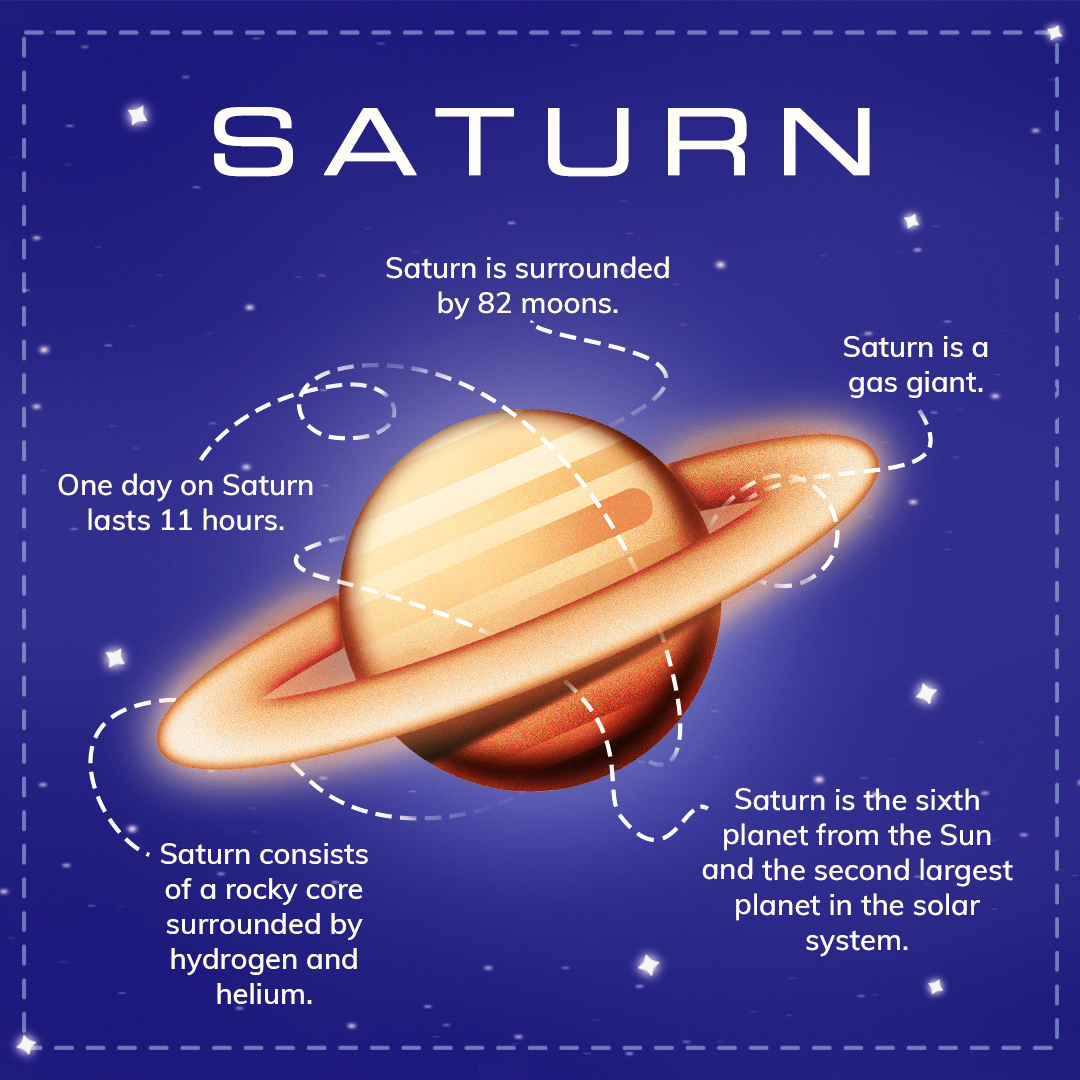
Saturn is visible to the naked eye from Earth! It may be more difficult to find in the night sky since it’s further away from us. Most people need large binoculars or telescopes to see Saturn properly. However, if you are able to spot it in the night sky you can see that the planet appears as a bright yellow sparkle in the sky.
Planet Uranus
Uranus is the seventh planet from the Sun. Surprisingly, Uranus is named after a Greek god instead of a Roman god. Uranus has been observed by many astronomers and funnily enough was thought to be a star at first! Uranus is the first planet to be discovered in the modern age by using a telescope.
Unlike the other planets of our solar system, Uranus is tilted so far that it essentially orbits the Sun on its side. This unusual orientation might be due to a collision with a planet-size body, or several small bodies, soon after it was formed. A 2018 study suggested the colliding world could have been twice the size of Earth.
Uranus has the coldest atmosphere of any of the planets in the solar system, even though it is not the most distant from the Sun.
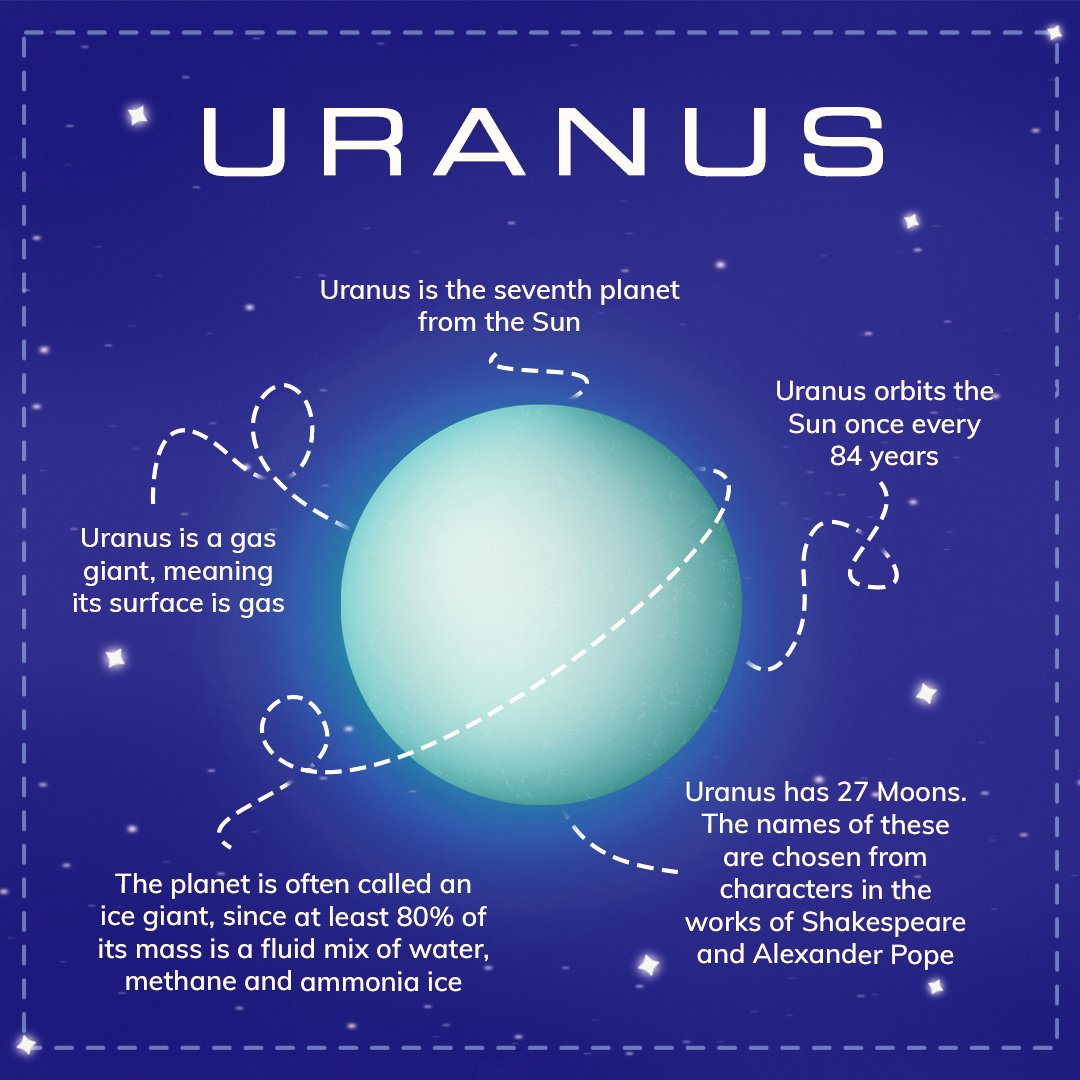
Uranus has a range of brightness which is near the limit of naked eye visibility. Much of the variability is dependent upon whether the planet is being illuminated by the Sun and when it is being viewed from the Earth. Until mid-May, Uranus is so close to the Sun that it’s difficult or impossible to spot. However, you can see Uranus as early in the year as June if you’re willing to get up before dawn. Throughout the summer months, Uranus rises earlier and earlier, and by August it rises before midnight, causing it to be visible all night.
Planet Neptune
Neptune is the eight planet in our solar system and is the furthest away from our Sun. It is 17 times the mass of Earth, slightly more massive than its near-twin Uranus. It is a near-twin with Uranus because they are both ice gas-giants that are mostly composed of ice and rocks.
The atmosphere of Neptune is quite active and therefore shows weather patterns. Just like Jupiter, Neptune has similar storms. Neptune has the strongest winds of any planet in the solar system with the highest speed being around 2100 km/h. One storm that was visible by a space probe flying by was called the Great Dark Spot and is comparable to the Great Red Spot on Jupiter.
Because Neptune is the furthest away from the Sun, its outer atmosphere is one of the coldest places in the Solar System.
Neptune has 14 known moons. From these Moons, Triton is the largest and takes up more than 99.5% of the mass in orbit around Neptune
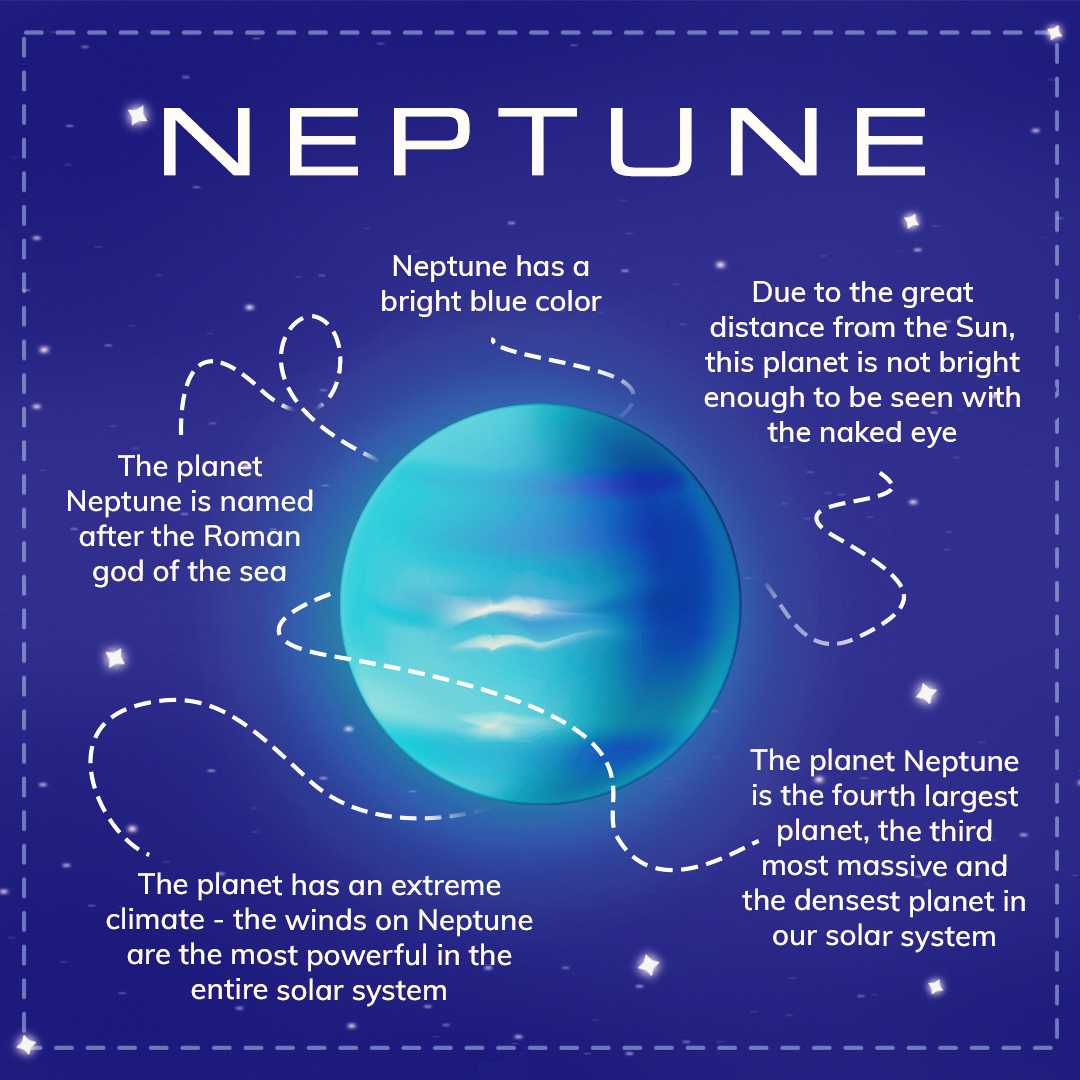
Neptune is not visible to the unaided eye and is the only planet in the solar system found by mathematical prediction rather than by empirical observation.
Our planets
In this blog we have shared amazing facts with you about our planets. If you would like to know more about a specific planet, please make sure to check out the links embedded in their section. Each of these planets has a special blog dedicated to them with all the details!
Now that you are an expert on all the planets in our solar system, you can put these facts to work and show others your knowledge! Want to spot the planets in the night sky but need some help locating them?
